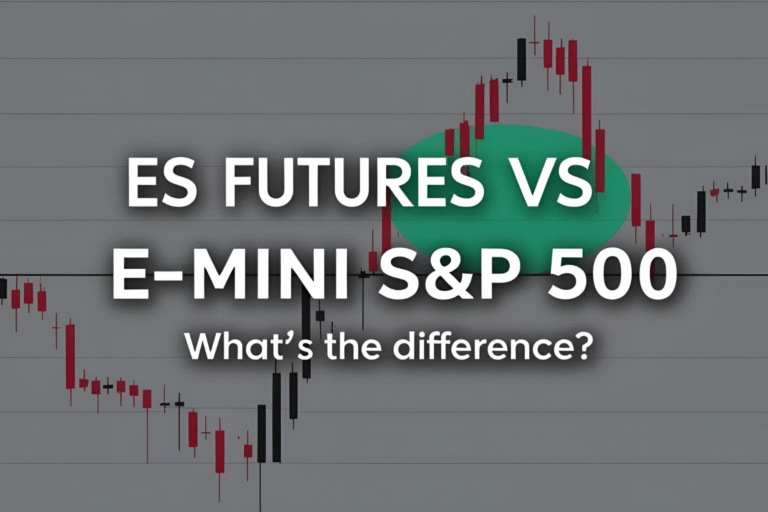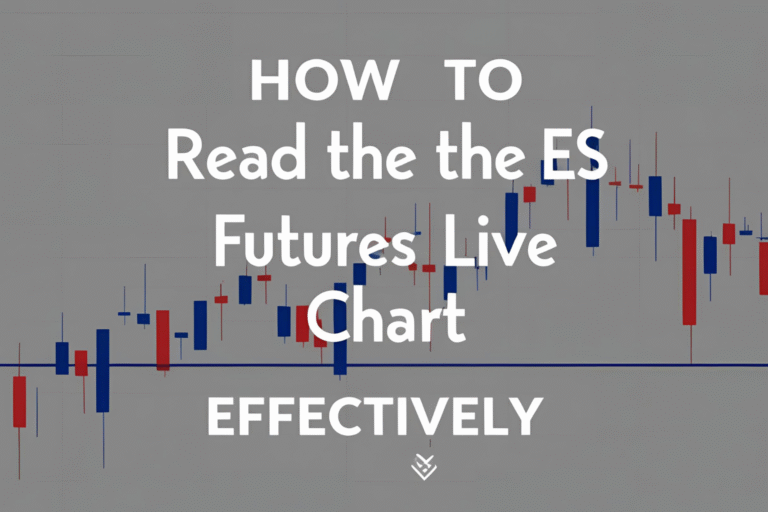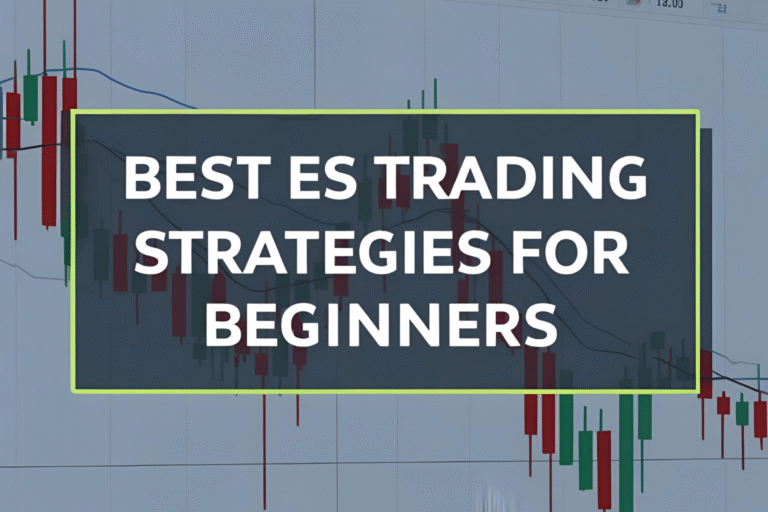Day Trading vs Swing Trading ES Futures: Which Is Right for You?
When trading ES futures (E-mini S&P 500), one of the first choices you’ll need to make is your trading style — should you day trade or swing trade?
Both methods can be profitable, but they differ in approach, risk, time commitment, and emotional demands. This post compares day trading vs swing trading ES futures to help you decide which fits your goals.
What Is Day Trading ES Futures?
Day trading involves opening and closing trades within the same day. You never hold positions overnight.
Key traits:
- Uses 1-min to 15-min charts
- Aims for multiple small moves per day
- Requires constant screen time
- Relies heavily on technical analysis
- Avoids overnight risk
What Is Swing Trading ES Futures?
Swing trading involves holding trades for several days or weeks to capture larger moves.
Key traits:
- Uses 1-hour to daily charts
- Focuses on trend continuation or reversal
- Requires less screen time
- May include both technical and fundamental analysis
- Involves overnight margin and risk
Major Differences
| Feature | Day Trading | Swing Trading |
|---|---|---|
| Timeframe | Intraday (minutes to hours) | Multi-day to weekly |
| Holding Period | No overnight positions | Holds trades overnight |
| Chart Type | 1-min, 5-min, 15-min | 1-hour, 4-hour, daily |
| Risk Exposure | Limited to intraday | Subject to overnight gaps |
| Profit Target | 5–20 points per trade | 20–100+ points per trade |
| Capital Required | Often lower due to day margin | Higher due to overnight margin |
| Time Needed | High – multiple hours/day | Moderate – 1–2 hours/day |
Pros and Cons
Day Trading Pros:
- Fast results
- No overnight exposure
- Plenty of trading opportunities
Day Trading Cons:
- Emotionally intense
- Requires constant attention
- High commission costs for active trading
Swing Trading Pros:
- Less screen time
- Potential for larger moves
- Less stress from short-term noise
Swing Trading Cons:
- Exposed to news and overnight gaps
- Requires more patience
- Can be slower to see returns
Which One Should You Choose?
Consider your:
- Available time: If you can monitor charts during U.S. trading hours, day trading may fit.
- Risk tolerance: If you prefer smaller, quick gains — day trading. If you’re okay with holding through pullbacks — swing trading.
- Personality: Day trading suits fast decision-makers. Swing trading suits analytical, patient traders.
- Capital: Day trading requires less margin for intraday positions. Swing trading needs more due to overnight exposure.
You can even combine both — day trade part-time and swing trade longer setups.
Final Thoughts
There’s no one-size-fits-all answer. Both day trading and swing trading ES futures can be profitable if you stick to a system, manage your risk, and follow your plan.
The key is to start with one, learn it well, and then expand as your experience grows. Whether you choose fast-paced action or longer-term patience, ES futures provide the flexibility for both.
FAQs
1. Is day trading ES futures riskier than swing trading?
Not necessarily — both carry risk, but day trading involves faster decisions and tighter stops.
2. Can I swing trade ES futures with a small account?
Yes, but you’ll need sufficient margin to hold positions overnight.
3. Do I need different strategies for day vs swing trading?
Yes, intraday trades use shorter setups, while swing trades focus on broader trends.
4. Which is better for beginners?
Swing trading is often easier to manage, but day trading provides faster feedback and learning.
5. Can I do both at the same time?
Yes, many traders use both styles depending on market conditions and time availability.




